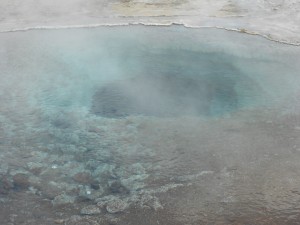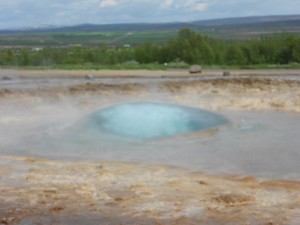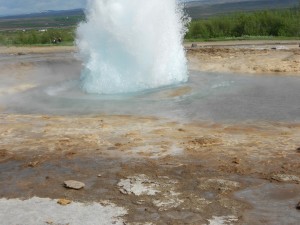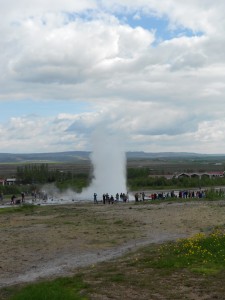 Chris Mitchell author of the new book Mindful Living with Asperger’s Syndrome reflects on how mindfulness practices can help individuals with Asperger Syndrome (Autism Spectrum Disorder) overcome anxieties and sensory issues.
Chris Mitchell author of the new book Mindful Living with Asperger’s Syndrome reflects on how mindfulness practices can help individuals with Asperger Syndrome (Autism Spectrum Disorder) overcome anxieties and sensory issues.
One of the purposes of mindfulness practice is to tune one into the present moment, this includes taking note of sensations that are arising and fading with us constantly that we may rarely notice. By tuning into sensations deeper than those that we experience in daily life and using all of our sensory channels, sight, sound, touch, taste and smell, to notice the sensations all around us, we become more present in the moment. This can be particularly helpful to people with Asperger Syndrome who may have sensory difficulties as it helps them to open up to their concerns and anxieties.
Sensory difficulties in different people on the autistic spectrum vary dramatically from the excessive to the very mild, as do individual abilities to cope with them. Some may experience excessive reactions, including physical pain and nausea, while others may make an effort to avoid situations where they feel that they are likely to experience sensory overload. This avoidance approach can unintentionally create high-level anxiety through worrying about possible sensory experiences they may encounter in daily life that may cause problems. From this a ‘sensory bubble’ can build up around a person with Asperger’s Syndrome. In reality, sensory experiences rarely happen in isolation so its often difficult to notice as and when they occur. For example, when you’re on autopilot, you may only be tuned into one or two of your sensory channels so it’s easy to become oblivious to sensations picked up by your other sensory channels that are occurring at the same time.
 Step outside your ‘sensory bubble’
Step outside your ‘sensory bubble’
A visit to an active geyser is a good example of how different sensory experiences happen as a whole rather than separately. More than simply the sight of seeing the geyser erupt, other senses are also affected. From the smells of minerals in the rocks, such as sulphur, to the sounds of bubbling water and the gushing sound made by the eruption as well as the sight of the eruption itself. This is a sensory experience that uses every human sense. The colours of the rocks and feel of the water are all a part of this experience; the yellow of the sulphur, the red of the iron and the bright blue of the hydrogen visible in the water all as well as the touch of water in a shower after an eruption! By opening to our senses as they are affected in this way, it can add to the quality of the experience.
 However, to get in touch with your sensory channels, you doesn’t have to go out of your way to visit a geyser. It is possible to open up to all your senses in just about all aspects of daily life. This may be washing the dishes or brushing your teeth or it may even involve your special interest or Asperger related pastime. An example from my own interests I am going to use is stargazing. When observing the skies away from the excesses of light pollution, with patience, your eyes slowly adapt to the dark sky and on a clear night, you may notice more stars than what may be apparent to us when habitually glancing at the sky. If you are observant enough, you may even be able to see the colour in some stars and, over a period of a few days to a few months, the changes in brightness in variable stars, most famously Algol in the constellation of Perseus. This is where your sensory experience can deepen and may help you take your improved sensory noticing into your daily life.
However, to get in touch with your sensory channels, you doesn’t have to go out of your way to visit a geyser. It is possible to open up to all your senses in just about all aspects of daily life. This may be washing the dishes or brushing your teeth or it may even involve your special interest or Asperger related pastime. An example from my own interests I am going to use is stargazing. When observing the skies away from the excesses of light pollution, with patience, your eyes slowly adapt to the dark sky and on a clear night, you may notice more stars than what may be apparent to us when habitually glancing at the sky. If you are observant enough, you may even be able to see the colour in some stars and, over a period of a few days to a few months, the changes in brightness in variable stars, most famously Algol in the constellation of Perseus. This is where your sensory experience can deepen and may help you take your improved sensory noticing into your daily life.
Everyday practices to help engage senses
Two more much more easily accessible exercises where mindfulness can be practiced in a sensory way include eating, (to help open up to taste that we may miss out on) and listening to sounds (opening up to sounds that are around us but that we may be habitually oblivious to). When eating, it’s easy to fall into the habit of digesting our food so quickly that we miss out on its taste and are not present in the moment. An exercise taught on the eight-week mindfulness-based stress reduction course is the ‘raisin exercise’, where when eating a raisin, participants are encouraged to be with each moment of the process, starting with noticing the feel of the texture when holding the raisin in your hands and then on your lips. Then one is encouraged to start to slowly chew the raisin noticing the change on texture from dry to moist and its taste, and once digested, its after-taste.
 A similar mindfulness exercise can be practiced to help us tune into the sounds around us. Sitting or standing in a relatively quiet place can be a good way to notice sounds that we may habitually oblivious to. But when we close our eyes for just a few minutes, we can start paying attention to sounds, you may begin to notice a whistling sounds passing through our ears. And when you open your eyes again, you may hear different sounds that you are able to tune in to and feel within the present moment.
A similar mindfulness exercise can be practiced to help us tune into the sounds around us. Sitting or standing in a relatively quiet place can be a good way to notice sounds that we may habitually oblivious to. But when we close our eyes for just a few minutes, we can start paying attention to sounds, you may begin to notice a whistling sounds passing through our ears. And when you open your eyes again, you may hear different sounds that you are able to tune in to and feel within the present moment.
All of the activities listed above from experiencing a geyser eruption to quietly watching the sky at night can help with issues such as anxiety. They are of a special help to people on the autistic spectrum who may have difficulty with sensory issues. By opening up our senses and embracing all that happens around us we are able to overcome our challenges rather than becoming constrained by them.
Chris Mitchell is the author of new book Mindful Living with Asperger’s Syndrome and Asperger’s Syndrome and Mindfulness both published by Jessica Kingsley Publishers.